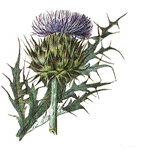Papers in the Biological Sciences
Date of this Version
1985
Abstract
We studied predation upon the fruits of four common terrestrial plant species of atolls by excluding: 1) all predators; 2) large predators only; and 3) no predators. Each of these treatments was located within the vegetation at three distances from the shore: beach edge of fringing thicket; middle of the thicket; and inner forest. The plants were Terminalia catappa, Messerschmidia argentea, Scaevola taccada, and Guettarda speciosa. Predation loss over the year was significant (P < 0.01) for all four species. Location contributed significantly only for S. taccada. Amount of loss and predominant type of seed predator for a plant species were related to size and conspicuousness. The largest fruits, those of the widespread tree T. catappa, were destroyed completely at all sites; the damage was done by both insects and terrestrial crabs. The large fruits of G. speciosa were destroyed by insects inland and by crabs at the beach edge. The small fruits of M. argentea, a plant which is common along the beach, tended to have greater losses away from the beach edge; those losses were caused primarily by insects. For S. taccada, which occurred at the beach edge, fruit survival was highest in the middle of the fringe thicket; average damage and disappearance were high and caused primarily by large predators. In sum, the experiment demonstrated that predation by widespread, omnivorous large animals and insects on an atoll island was important in survival of fruits and enclosed seeds. We conclude that this interaction could have a significant influence on the dynamics of plants on atolls.


Comments
Published in American Journal of Botany 72:3 (1985), pp. 438-445. Copyright 1985 Botanical Society of America. Used by permission.